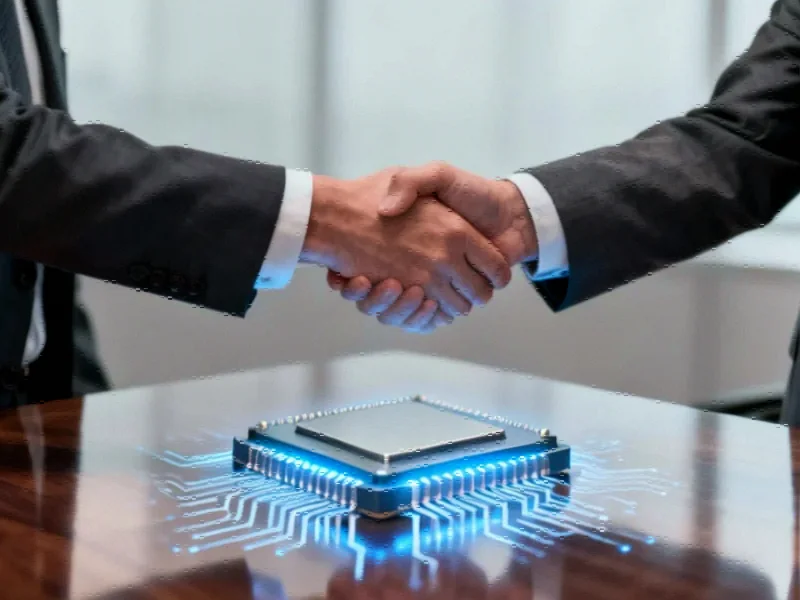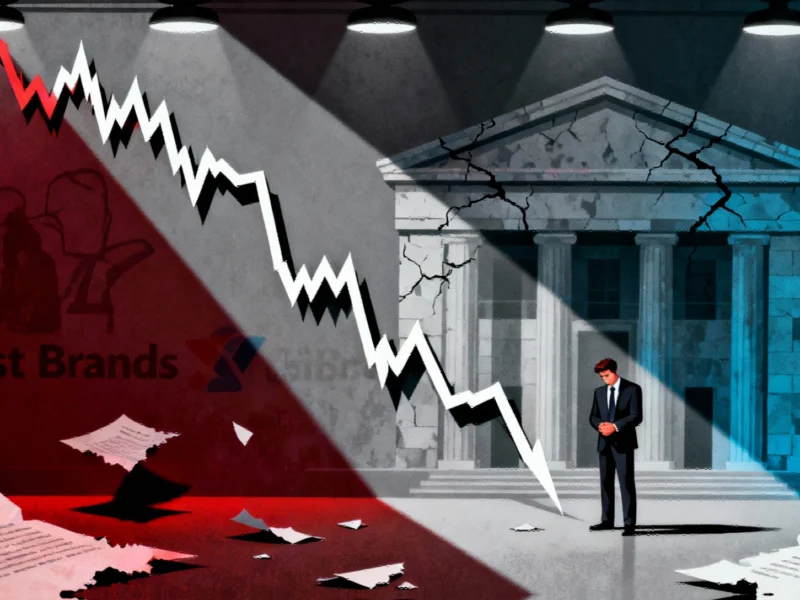Intel’s Strategic Outreach to Saudi Arabia
In a significant move that could reshape global semiconductor manufacturing dynamics, Intel CEO Lip-Bu Tan has engaged in high-level discussions with Saudi Arabia’s Minister of Communications and Information Technology Abdullah Al-Swaha. The meeting, confirmed by multiple sources including detailed industry reports, marks Intel’s latest effort to secure strategic partnerships and capital infusion for its ambitious turnaround strategy.
The timing of these discussions coincides with Saudi Arabia’s aggressive push to diversify its economy beyond oil, with the nation’s Public Investment Fund (PIF) showing increasing interest in technology sectors. This potential partnership represents a calculated gamble for both parties—Intel gains access to deep-pocketed investors while Saudi Arabia accelerates its technological transformation.
The Middle Eastern Semiconductor Gambit
Intel’s exploration of Middle Eastern partnerships isn’t occurring in isolation. The semiconductor giant has been actively pursuing multiple fronts in its comeback strategy, from refining its foundry operations to securing partnerships with industry leaders. What makes the Saudi discussions particularly intriguing is the kingdom’s demonstrated willingness to make massive, long-term investments in strategic technologies despite limited manufacturing experience.
As industry developments in artificial intelligence infrastructure continue to accelerate, nations with substantial capital reserves are recognizing the strategic importance of controlling semiconductor supply chains. Saudi Arabia’s interest mirrors broader regional trends, where Gulf nations are positioning themselves as future technology hubs rather than merely commodity exporters.
Challenges and Opportunities in Desert Chip Manufacturing
Establishing advanced semiconductor fabrication facilities in regions without existing manufacturing ecosystems presents unique challenges. Previous attempts, such as Qatar’s approach to TSMC, failed due to concerns about labor expertise and supply chain logistics. However, Intel’s situation differs significantly—the company brings decades of manufacturing expertise and could leverage Saudi capital to overcome initial hurdles.
The partnership discussion comes at a critical juncture for both parties. Intel needs substantial investment to compete with TSMC and Samsung in advanced process nodes, while Saudi Arabia seeks to fast-track its technological capabilities. Recent related innovations in computing technology demonstrate how rapidly the competitive landscape is evolving, putting pressure on both established players and newcomers to secure strategic positions.
Broader Implications for Global Semiconductor Industry
This potential partnership extends beyond bilateral benefits, potentially reshaping global semiconductor geopolitics. As nations increasingly view chip manufacturing as a matter of national security, the emergence of Middle Eastern capital in the sector could create new alliances and competitive dynamics. The discussions occur against a backdrop of significant market trends in technology sovereignty and supply chain diversification.
Intel’s strategy appears to involve creating multiple capital and partnership fronts, from its existing relationship with SoftBank’s Saudi-backed funds to potential direct investment from Gulf nations. This multi-pronged approach reflects the enormous capital requirements of maintaining competitiveness in advanced semiconductor manufacturing, where building a single state-of-the-art fab can cost upwards of $20 billion.
The Road Ahead for Intel’s Comeback Bid
While the Saudi partnership remains in discussion phases, its potential impact on Intel’s fortunes cannot be overstated. Success would provide not just capital but strategic positioning in a region aggressively pursuing technological relevance. However, the path forward requires navigating complex geopolitical considerations and technical challenges.
As the semiconductor industry continues to witness recent technology breakthroughs and evolving competitive dynamics, Intel’s ability to secure and leverage Middle Eastern investment could determine whether the company can execute its ambitious foundry roadmap and reclaim manufacturing leadership. The coming months will reveal whether Gulf capital can indeed power Team Blue’s semiconductor resurgence, or if this represents another promising but ultimately unrealized opportunity in the highly competitive chip landscape.
The broader context of these developments includes emerging industry developments across multiple technology sectors, highlighting how strategic partnerships and capital allocation are becoming increasingly crucial for maintaining competitive advantage in fast-evolving fields.
This article aggregates information from publicly available sources. All trademarks and copyrights belong to their respective owners.
Note: Featured image is for illustrative purposes only and does not represent any specific product, service, or entity mentioned in this article.



